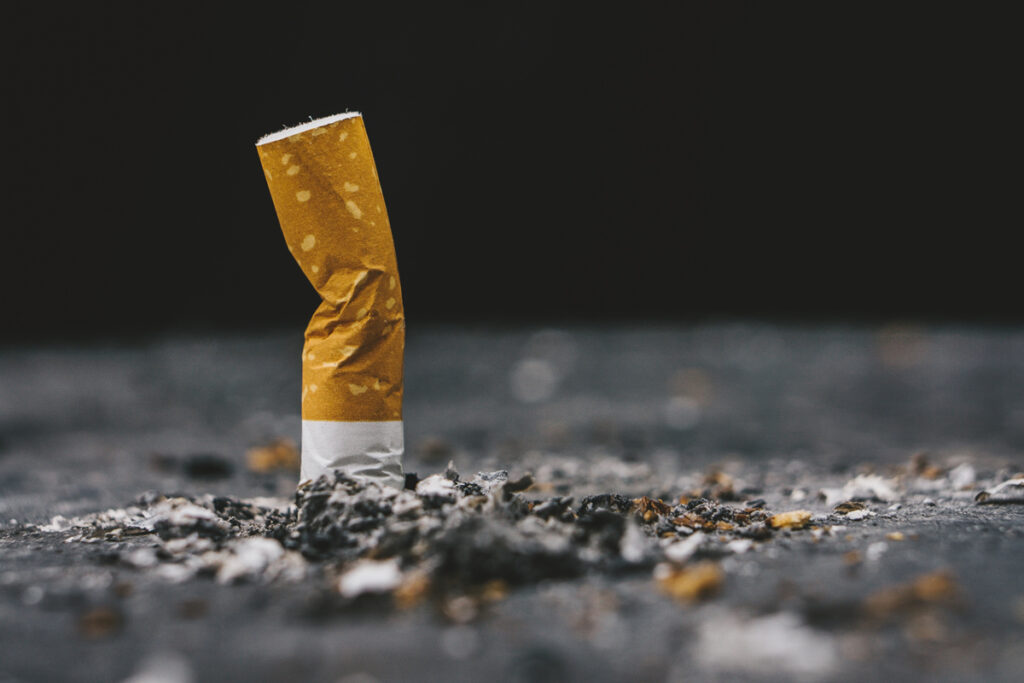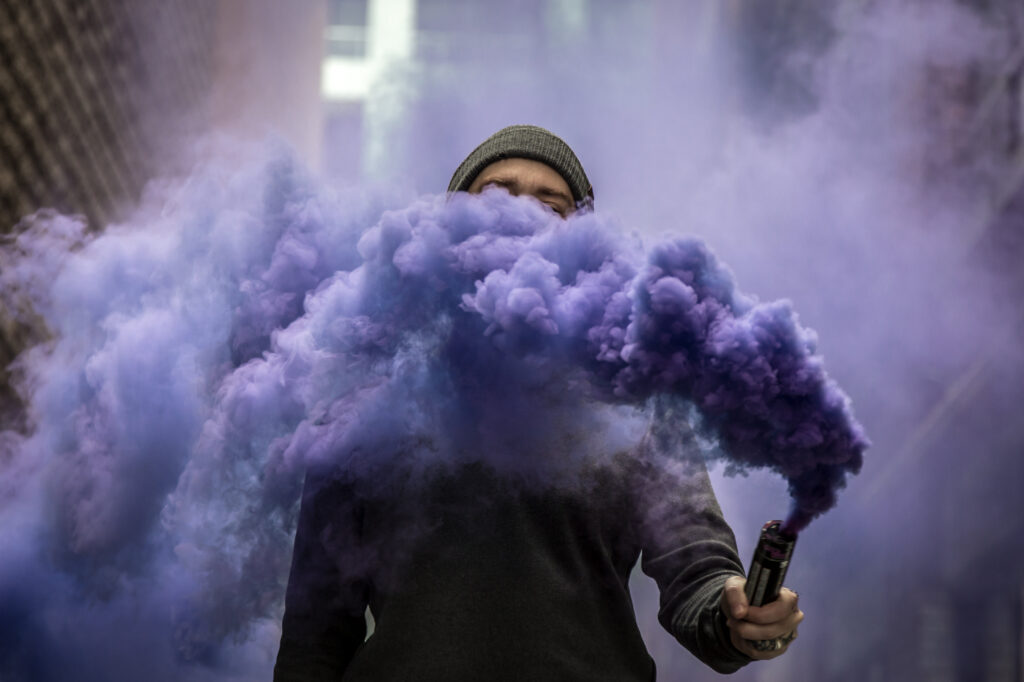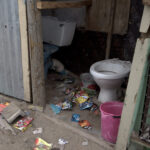- British American Tobacco in South Africa (Batsa) says 200 of its workers will be out of a job soon, but public health researchers argue they’re using misleading figures to explain why they’re downsizing.
- Batsa claims the illegal tobacco trade in South Africa makes up 70% of the market. The figure is a misquote of a study Batsa paid Ipsos to do. Independent research puts the illegal trade at 54%. In actual fact, Ipsos’s reports show a decrease in the number of stores selling illegal cigarettes.
- Here we explain why the country’s illicit trade is booming and how to separate industry tactics from the fallout of bad COVID-era policies.
British American Tobacco South Africa (Batsa) is using a misleading figure to explain why 200 workers could be retrenched in 2023, say public health researchers.
In a January 13 statement, the company explains that its business has been crippled by the illegal tobacco trade, which it estimates makes up 70% of the country’s tobacco business.
Independent research shows that although multinationals such as Batsa did lose a big chunk of their business to illicit trade during the 2020 COVID lockdown’s tobacco ban, their sales bounced back again, albeit not quite to what it was before.
Batsa’s 70% estimate comes from a survey that the tobacco giant paid the market research firm, Ipsos, to do — except the Ipsos paper doesn’t come to this conclusion.
Inflating the size of the illicit trade is an industry tactic often used to argue that higher taxes will lead to an increase in illicit trade.
But something has shifted in the underbelly of South Africa’s tobacco trade.
This time, the illicit trade of tobacco really is growing (from around 35% in 2017 to 54% in 2021) and easy access to cheaper, illegal smokes is likely to undermine anti-smoking policies.
Experts, however, argue there’s more to Big Tobacco’s concern than meets the eye. What looks like a company trying to be a good corporate citizen, they say, is more likely to be a new approach to an old goal: to protect its bottom line.
We untangle the web of public health history, business feuds and bad COVID policies, and explain how multinational tobacco companies got into a mess possibly of their own making.
Batsa misquotes its own study
How did Batsa get to 70%?
Over a period of two years, the multinational manufacturer periodically released its findings of a six-part study (each called a wave) looking into illicit trade.
The first report was published in 2021 and the sixth and final one in October 2022.
After the findings of the fifth wave were made available to the public, Batsa’s general manager, Johnny Moloto, told the media that illicit trade made up 70% of the cigarette market.

But this figure is different from what was published in the study.
The results showed that 68.9% of the shops sampled in Gauteng and 79% of the shops in the Western Cape sold illicit cigarettes for less than R22.79 (R19.82 sin tax + 15% VAT).
This was the amount of tax that was supposed to be paid for a box of 20 cigarettes in 2022 when the survey was conducted. If shops sold a pack of cigarettes for R22.79, the manufacturer makes no profit on the sale unless they failed to pay tax on the product.
As a comparison, the study also looked at how many boxes were sold at R27.89, a price at which manufacturers would be able to turn a profit and so would likely not be illegally traded goods.
Batsa’s statement is misleading for three reasons, explains Nicole Vellios from the University of Cape Town’s Research Unit on the Economics of Excisable Products (Reep).
Firstly, the figure only refers to the proportion of shops that sell illegal cigarettes in one province, it’s not an accurate picture of the size of the entire illegal market, she says. “Batsa should rather be saying that 70% of stores that it sampled in Gauteng sold illicit cigarettes.”
Secondly, the shops that sell illegal smokes may also be making legal sales, so lumping it all together could inflate the numbers.
Thirdly, placing undue emphasis on the 70% figure disguises the finding that, for the country overall, the number of stores that sold illicit cigarettes actually dropped from 47% in 2021 to 34% in 2022.
How big is South Africa’s illicit trade really?
By Vellios’s estimates, about 54% of the country’s tobacco market was illegal in 2021.
She used a method called “gap analysis” to calculate this figure — and although not a perfect technique, it gives a pretty good idea of what the numbers look like. (One issue with this method is that it relies on how much people say they smoke — and people often underplay how much they use substances such as tobacco and alcohol.)
It’s a simple subtraction sum: the number of sticks smoked each day minus the number of cigarettes for which the South African Revenue Service (Sars) collected sin tax.
South Africans smoked 29.1-billion cigarette sticks in 2021, according to calculations Vellios made based on the National Income Dynamics Survey and the Global Adult Tobacco Survey conducted by the South African Medical Research Council.
The math goes like this:
Twenty point five percent of South Africans smoked cigarettes every day in 2021. So that’s 8.6-million smokers (based on United Nations population data available during the study).
Each of those people smoked 8.8 cigarettes per day, which totals 27.6-billion sticks for the year.
Lastly, she factored in an extra 5% to balance out the fact that people might underplay how much they really smoke. Final count: 29.1-billion cigarettes.
But Sars only got sin tax for 13.5-billion sticks in 2021.
Here’s how she got to that:
With R18.79 tax levied per pack in 2021, the tax man expected earnings of R9.16-million from smokes made in the country, which would translate to 487-million packs.
There’s a catch, though: The calendar year runs from January to December, but the financial year is from April to March. So, to get a realistic estimate she had to use a quarter of the sin tax from 2020 and three-quarters from 2021.
That brought the figure down to about 474-million packs, or 9.474-billion individual cigarettes.
Then add another 3.97-billion imported sticks for which Sars collected money to the count.
That gives a total of 13.5-billion sticks (give or take a few).
So: 29.1-billion sticks smoked minus 13.5-billion on which tax was paid leaves 15.6-billion sticks (or 54%) being sold illegally.
Sars depends on the tobacco companies to report their production and so the incentive to under-report is substantial. With gap analysis, however, “you can keep track of trends in illicit trade over time”, explains Corne van Walbeek, head of Reep.
He adds: “Once you have an idea of those trends, you can see whether illicit trade is increasing or decreasing.”
How did it get so bad?
The illegal tobacco trade in South Africa has ballooned since 2009.
It had been sitting at around 5% between 2002 and 2009.
From then on, it started increasing, reaching about 20% by 2013. After an initial drop the next year, it jumped to 33% between 2014 and 2017.
Why?
Because, says Van Walbeek, the taxman’s illicit trade sleuths and senior tax experts were sacked under former Sars commissioner, Tom Moyane, who was appointed at the end of 2014.
Big Tobacco’s hand was lurking in these firings too. In his book Tobacco Wars whistleblower Johann van Loggerenberg accused Batsa of using its political ties to dodge investigations into the tobacco business.
But Sars has also failed to keep up with international practices when it comes to tax administration.
The most effective strategy to stop smuggling is a digital system of stamps called “track and trace”, but in South Africa, most cigarette cartons are marked by a diamond-shaped excise stamp to show that the product has been declared to Sars and is intended to be sold in South Africa.
But the stamp is easy to fake and impossible to verify, researchers say. It is nearly invisible and there’s no link to tax payment.
[WATCH] A beginner’s guide to smoking laws
Instead of the “track and trace” system, Sars relies on strategies that are not backed by the World Customs Organisation, such as placing customs officers inside manufacturing plants, according to the University of Bath’s research group Stopping Tobacco Organisations and Products.
The death knell for the legal tobacco business and the public purse came in 2020 during the early stages of the national lockdown, when the government banned tobacco sales for five months between March and August.
People kept smoking whatever they could find, no matter the cost. Research shows some smokes were going for more than four times their usual prices, although on average people were doling out 2.5 times what they would usually pay.
As a result, researchers argue, the progress Sars made in curbing illegal trade in 2019 was undone. Any measures the government puts in place to cut tobacco use will be less effective, the researchers write in Tobacco Control. Price hikes work well to get people to quit smoking, but the strategy is less powerful when people can easily get their fix at a cheaper price.
The lockdown policy bungle lost Sars R 5.8-billion in tax in 2020, according to the 2020 National Income Dynamics Study.
But it also holds the key to Big Tobacco’s recent calls for Sars to find out whether manufacturers are playing by the rules: they’re losing money.
Local manufacturers’ share of sales more than doubled during the sales ban. Their market share went from about 28% to 67% when sales were illegal, up-ending the year’s long upper hand that multinationals had.
Local companies have since kept many of these customers who still buy the cheaper cigarettes. Their market share slid back to 47% when the ban was lifted (which is still nearly one and a half times what they had before COVID).
But Sars is closing in. In 2022, the revenue service announced it will investigate local manufacturer Gold Leaf Tobacco Corporation for possible tax crimes.
Price wars: A taste of its own medicine?
Multinational tobacco companies have consistently pointed the finger at local tobacco manufacturers as the biggest contributors to the illicit market.
But the international companies’ pricing tactics played a role in fuelling the illicit trade between the 1990s and the first decade of the 2000s, research shows.
Since the early 1990s, multinational companies, including Batsa, controlled retail prices and sold cigarettes far above the excise tax increase. This made it possible for them to ensure high profits even if tobacco sales were decreasing.
Their juicy profits enticed smaller local manufacturers such as Carnilinx and Gold Leaf Tobacco Corporation to enter the market at much lower prices made possible by tax evasion.
Big Tobacco makes its own misery
Big Tobacco only worries about illegal trade when it’s not working in their favour, argues Van Walbeek.
But an analysis of industry documents shows that participating in the illicit trade has been part of BAT’s business plan for boosting their profits in Africa since the 1980s.
BAT also exports its cigarettes to countries where there’s armed conflict, such as Mali. There, it’s very likely that their products will end up in the hands of smugglers but they won’t halt sales, says Van Walbeek.
[LISTEN] The illegal cigarette business: How does it work?
Plus, Big Tobacco’s fingerprints are all over the international illicit trade.
Tobacco giants, including BAT, Philip Morris International and Japan Tobacco International, have been fined billions of rands for smuggling charges, according to a World Health Organisation report.
In response to Bhekisisa’s request for comment, Batsa said that it is unable to answer media queries as “BAT South Africa is in the middle of a complex Section 189(1) [retrenchment] process.”
An inconvenient solution: Will SA track and trace?
South Africa is yet to ratify the World Health Organisation’s Protocol to Eliminate the Illicit Trade in Tobacco Products, which also recommends “track and trace”.
Sars opened tenders for such a system in 2019 but it was extended multiple times and eventually cancelled.
At the time, local manufacturers said the disappearing tender was a sign that the government was influenced by the international tobacco giants, whose now-defunct industry body, the Tobacco Institute of Southern Africa, pushed back against the tender soon after it was announced.
In reply to a query from Bhekisisa, Sars says they have a bunch of tools to fight illicit trade, including policy and technology instruments, and added that management is still looking into track-and-trace technology as a solution to illicit trade.
But no timeframes are specified.
Batsa has already called for government to roll out track-and-trace systems.
But if South Africa does roll out such a deterrent, it’s crucial that the tobacco industry has no say in the process, emphasises Van Walbeek.
The industry has its own tracing system, called Codentify. But local researchers say it’s too expensive for most governments to afford.
It needs a lot of people to work, and unless the monitoring is run well, it’s not that effective at stopping smuggling.
They write: “Enforcement officers in a country with a Codentify system have little chance to detect large-scale fraud, but will have the illusion of control.”











